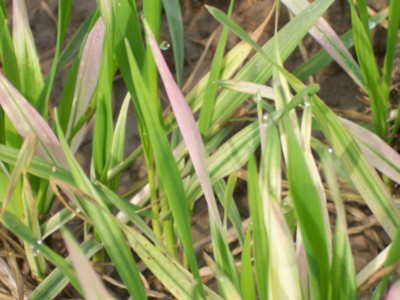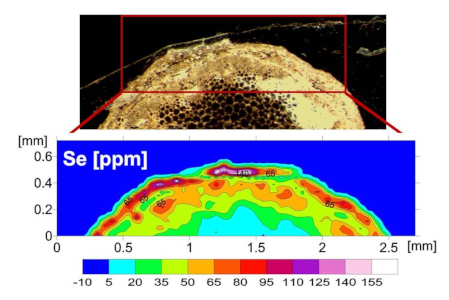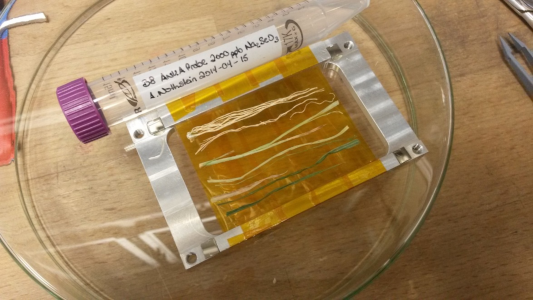Scientific background: Soil and (ground-)water pollution with metals or metalloids is often reflected in the plants and thus, can be transferred into the food chain. The actual transfer and enrichment, however, highly depends on the plant species as well as the element speciation, soil mineralogy, competing ions and microbial processes. We mainly investigate the transfer of As and Se into crops, based on element concentration and speciation measurements in different plant parts. For the latter, it is extremely important to assure sample preparation and measurement without evoking changes in the element speciation. Together with our colleagues from the Molecular Cell Biology (http://www.botanik.kit.edu/botzell/), we investigate how different forms of stress e.g., osmotic stress, are mirrored in major or trace element concentrations in different plant parts.
Our strength and some analytical challenges
- Determination of major and trace element concentrations in soil and plant material after acid digestion.
- Digestion of samples without considerable loss of volatile elements like As and Se.
- Investigation of element speciation in plant and soil material without analytical induced changes.
- Preparing microtoms for spatially resolved element and speciation mappings without element re-location.
- Non-destructive analysis of major and some trace elements in plant material using XRF.
- Investigating element transfer into plants using controlled set-ups that still mimic nature in a realistic way.
Analytical possibilities
Current research topics and projects
- Concentration of Na, K, Ca and Mg in plant tissue in relation to different forms of osmotic stress
- Concentration of Na, K, Ca and Mg in plant tissue in relation to abiotic forms of stress
- Irrigation influenced Se transfer and transformation in a seleniferous environment
Selected publications
- Ronzan M., Piacentini D., Fattorini L., Della Rovere F., Caboni E., Eiche E., Ziegler J., Hause B., Riemann M., Betti C., Altamura M. M., Falasca G. 2019. Auxin-jasmonate crosstalk in Oryza sativa L. root system formation after cadmium and/or arsenic exposure. Environmental and Experimental Botany. doi.org/10.1016/j.envexpbot.2019.05.013
- Eiche, E., Nothstein, A.K., Göttlicher, J., Steininger, R., Dhillon, K.S., Neumann, T., 2019. The behaviour of irrigation induced Se in the groundwater-soil-plant system in Punjab, India. Environmental Science: Processes & Impacts, 2019, DOI: 10.1039/C9EM00009G
- Nothstein, A.K., Eiche, E., Riemann, M., Nick, P., Maier, P., Tenspolde, A., Neumann, T., 2019. Coupling Langmuir with Michaelis-Menten – A practical alternative to estimate Se content in rice? PLoSONE 14(4):e 0214219. https://doi.org/10.1371/journal.pone.0214219
- Ronzan, M., Piacentini, D., Fattorini, L., Della Rovere, F., Eiche, E., Riemann, M., Altamur, M.M., Falasca, G. 2018. Cadmium and arsenic affect root development in Oryza sativa L. negatively interacting with auxin. Environmental and Experimental Botany, doi.org/10.1016/j.envexpbot.2018.04.008.
- Hazman, M., Hause, B., Eiche, E., Riemann, M., Nick, P. 2016. Different forms of osmotic stress evoke qualitatively different responses in rice. Journal of Plant Physiology. 202, 45-56.



